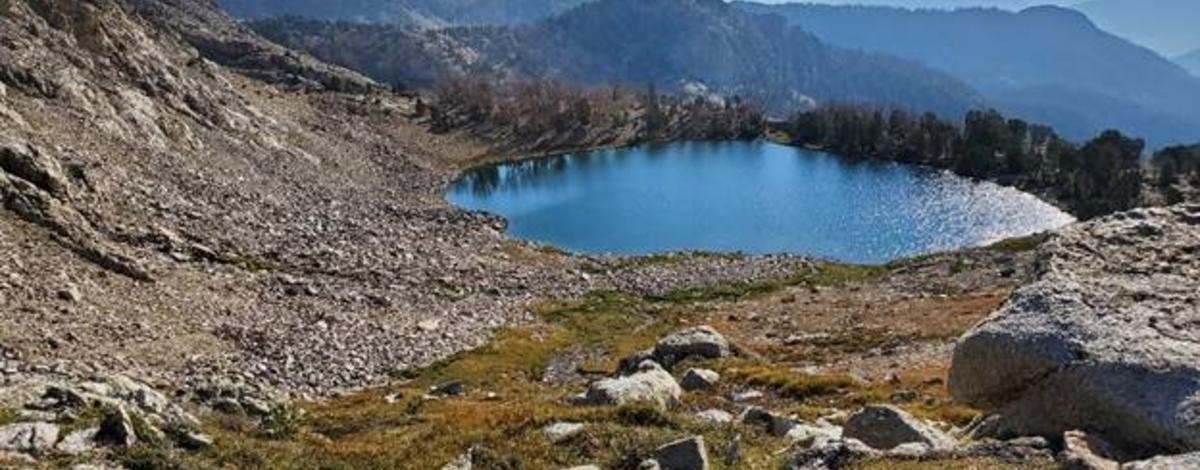Mountain lakes require some challenging logistics when you consider the travel and hiking required to access them, and when you arrive, there’s the challenge of catching fish, right?
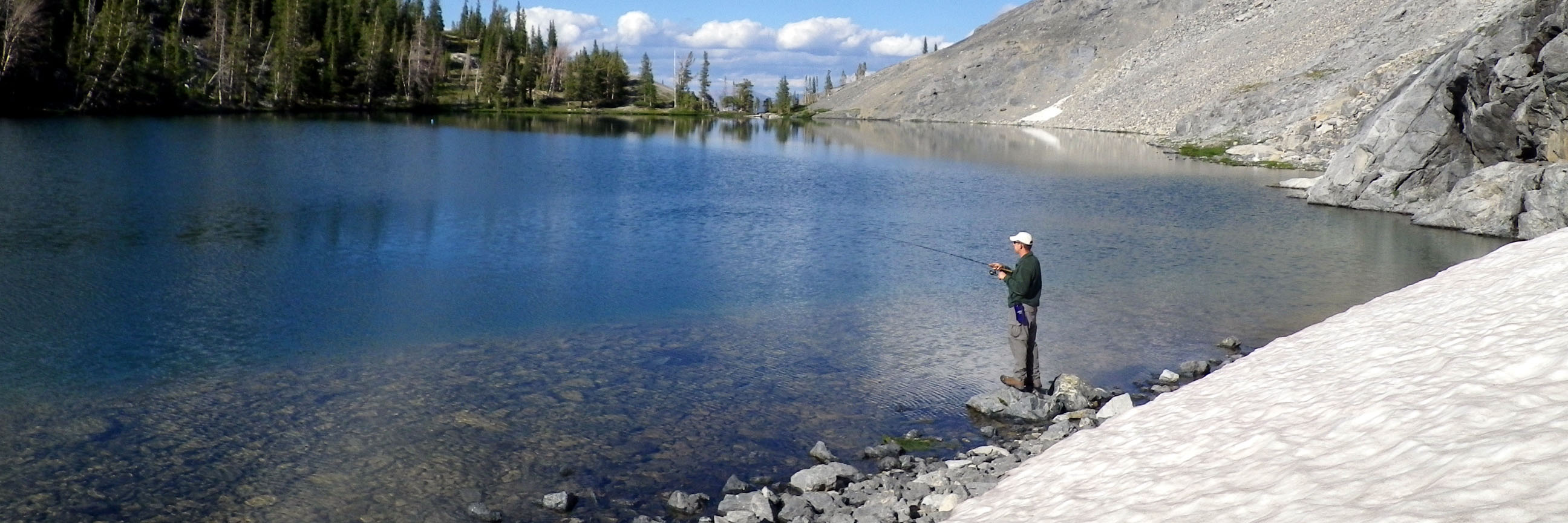
Fortunately, hardest part of fishing a mountain lake is usually getting to it. The fishing tends to be pretty simple, so don’t overthink it. Remember these fish have a very short growing season, so they tend to be pretty aggressive and active feeders. The fishing pressure at mountain lakes also tends to be light, so the fish aren’t real cagey, and basic trout fishing tackle and tactics are usually all you need to catch them.
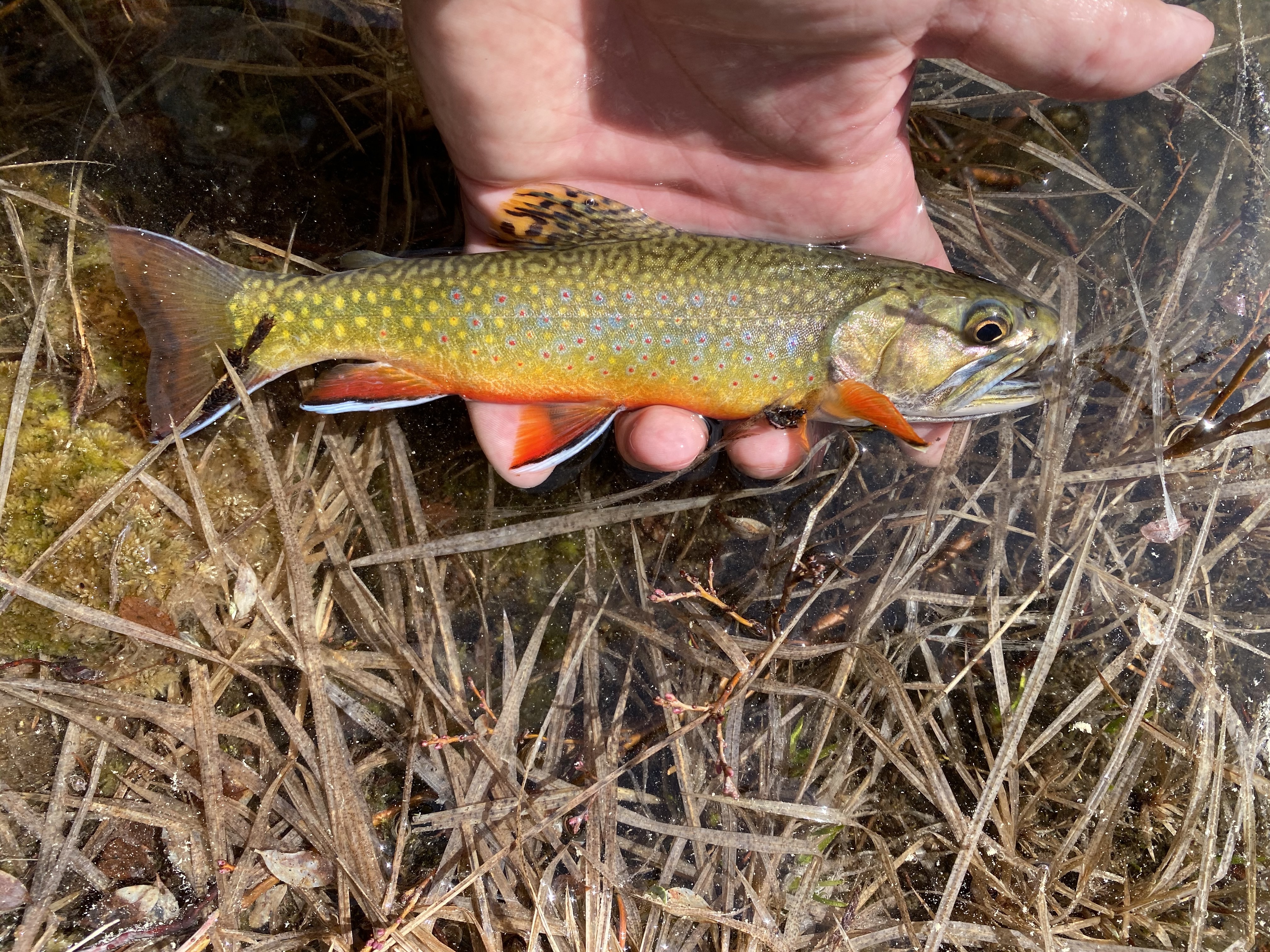
But one thing to consider is the best way to get within casting distance of the fish, which depending on the lake, can be a little tricky, and you may get wet. A pair of lightweight quick-drying shorts or pants and some sport sandals can be handy so you can wade the shoreline and get in better position to make a cast.
Bring a hat and polarized sunglasses to help you spot cruising trout and protect your eyes from fishing lures and intense alpine sunlight. Trout in mountain lakes tend to be cruisers looking for a meal, so spotting where trout are holding or cruising can increase your chances of catching them and keep you from wasting time on vacant water. Also remember that trout aren’t equally distributed throughout a lake, but concentrated in certain areas.
Whether you’re a fly angler or use conventional tackle, you don’t need a bunch of specialized tackle, flies, lures or bait for mountain lakes. You have to pack your gear in, so keep it simple, portable and preferably lightweight.
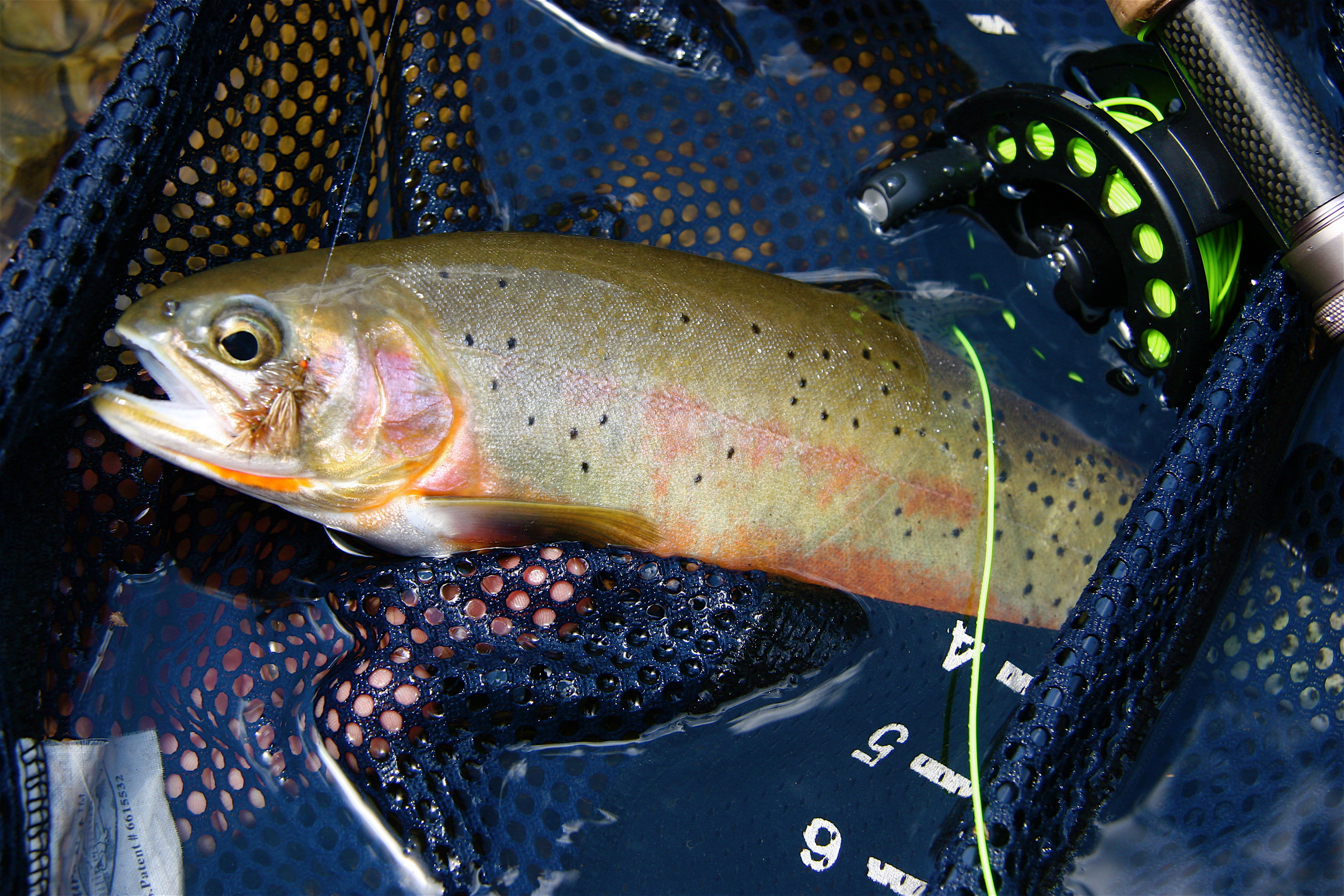
Basic fly fishing setup
Choose a fly rod between 8.5 to 10-feet long with three to five-weight line, preferably a rod that breaks down to four pieces for easy travel. Longer rods are usually better because they can make longer casts to reach fish and are better for roll-casting when up you’re stuck against brushy shorelines.
Spool your reel with a floating fly line and rig it with a 9 to 12-foot monofilament knotless tapered leader with a 4X or 5X tippet. Trout don’t tend to be line shy, so you can probably get away with a heavier tippet, but the water tends to be clear, so adjust accordingly.
Your kit should include forceps, fly floatant, extra tippet spools, line clippers, and a basic box of flies. Alpine lakes can be great places to catch trout on basic, traditional dry flies such as parachute Adams, black ants, beetles, hoppers or other small attractor flies. Don’t feel like you have to perfectly match a certain hatch. Flies that mimic basic insect shapes and are similar in size to naturals will usually catch fish.
If the trout aren’t taking dry flies try suspending a small beadhead nymph 2 to 3 feet below the surface from a strike indicator, or strip it slowly on a long leader. Common nymphs like the pheasant tail, hare’s ear, prince nymph, zebra midge etc. in sizes 12 to 16 are good choices. Small streamers like woolly buggers in black, brown and olive can also be productive.
Basic spin fishing setup
A spinning rod/reel combo from 5 to 7-feet long with a light or ultra-light action is a good choice. Rods should break down to two to four sections for easy travel so they can be strapped to a backpack. Spool the reel with 4-pound test monofilament line to cover most situations. Using lures is a good way to keep things simple without the need to carry bait. A few casting spoons and spinners in the 1/16 – 1/8 ounce size are a great option. You can also cast flies with a spinning rod by using casting bubble or float and use the same flies mentioned above.
If you prefer to fish bait, bring some barrel swivels, some size 6 to 10 baitholder hooks and a few sliding egg sinkers or split-shot to get your offering on the bottom, or suspend it 2 to 3 feet beneath a bobber. Traditional trout baits work well, such as worms, salmon eggs, etc. But if it’s summer and there are grasshoppers around, they can be great trout bait fished live or dead. A live grasshopper fluttering on the surface can be almost irresistible to a mountain lake trout.
While patience is often a virtue for anglers, don’t wait too long for a fish to bite in a mountain lake. Keep moving around until you start catching fish and concentrate on that area.
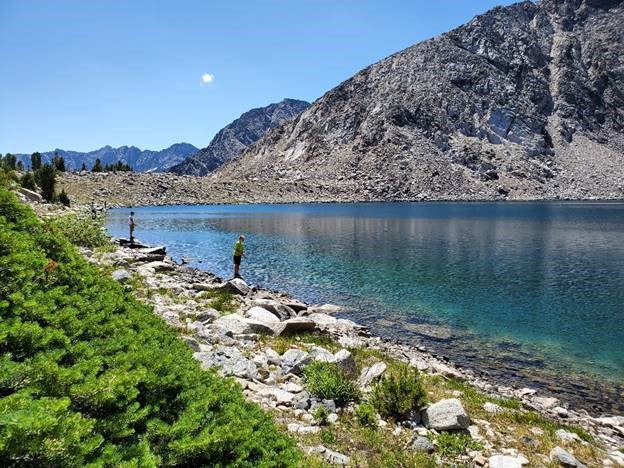
Where are the fish?
Trout in alpine lakes are usually on the lookout for food, so finding fish is much easier with a basic understanding of where trout typically hunt for food. Most of the food in alpine lakes are insects living in the lake, or terrestrial insects that blow onto the water from surrounding trees. Insects often hatch in shallow areas of a lake that are usually 2 to 10-feet deep where the sun can reach the bottom.
Look for trout cruising the shorelines along tree-lined banks where they might find ants, beetles or grasshoppers blown in by the wind. Trout will often cruise the same routes looking for food, so if you see a trout swim by, there’s a good change it will come by again later. Trout like to cruise areas with some kind of structure or a change in the shape of the lake. Look for points, underwater islands or humps, and sudden changes in depth from shallow to deep.
Places were a stream enters or leaves the lake are also favorite spots for trout, especially early and late in the season. Trout are constantly cruising around the lake, so keep moving to try new spots around the shoreline if you aren’t having any luck.
When you first arrive, it’s often advantageous to find a high point where the sun is at your back and actively look for fish before you start fishing. You may be surprised how easy they are to spot from a good vantage point.
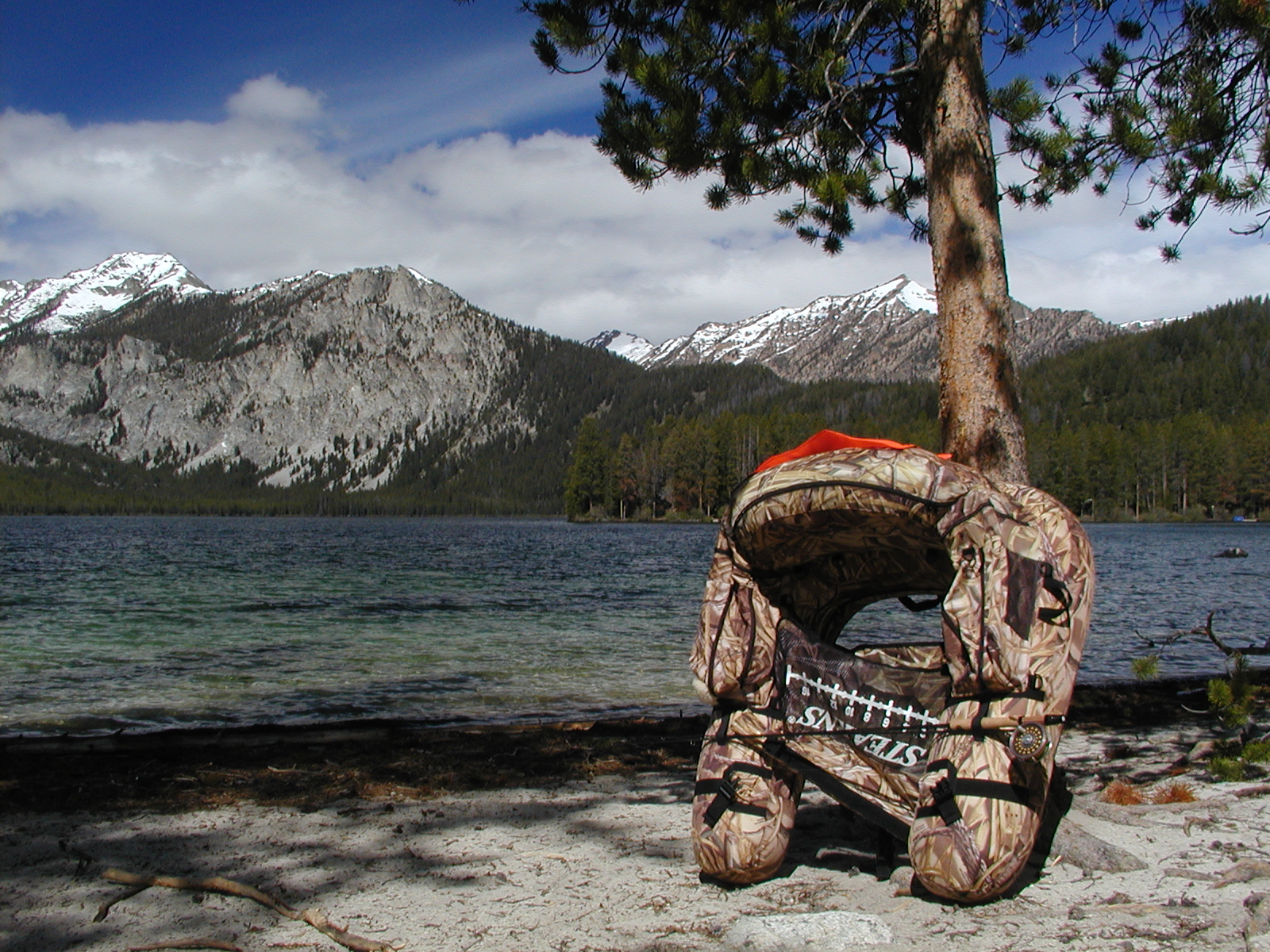
Floating mountain lakes
Floating obviously has its advantages, but you have to get your craft to the lake. Fortunately, there are lightweight float tubes that are relatively easy to pack, but remember you will need a pair of fins to propel yourself and likely waders because mountain lakes are cold by nature. You probably don’t want to be in a float tube with your bare legs dangling in the water for hours at a time. That’s a good recipe for hypothermia.
Another option is a “pack raft” which is very lightweight craft that compacts small for easy transport. These specialized craft can be paddled around, or you can just paddle out and drift and fish. Pack rafts tend to be expensive, so prepare for some sticker shock, but they were designed specifically for mountain lake fishing, and if it’s something you plan to do a lot of, they can be a good investment.
A small, inexpensive blow-up raft is another option. Be careful in direct sunlight, especially on hot days, because as the day warms the air can expand and burst a seam in the raft. That applies to all inflatables, but more so to inexpensive ones.
Other things to consider
Mountain lakes are incredible places, but they can also be unforgiving, and weather can be extremely unpredictable. Rainstorms can hit unexpectedly, and even snowstorms during summer. Always pack some warm clothes and possibly lightweight raingear, or some kind of rain shelter (such as a lightweight tarp or poncho), even if it appears to be a warm, sunny day.
Bringing a multi-tool pocket knife is very handy on the trail and should be part of your kit. These pocket knives are great when fishing to remove hooks and cut line, as well as preparing snacks or clean a fish for dinner. If you plan to keep fish, a stringer can be handy to store your catch. If you plan to hike out with fish, bring a stout plastic bag to store your fish inside and try to keep them cool while transporting and have a cooler waiting at your vehicle.
To learn more see our Alpine Lakes webpage, which includes information about where to go, how to prepare for your trip, fisheries management, and more.

